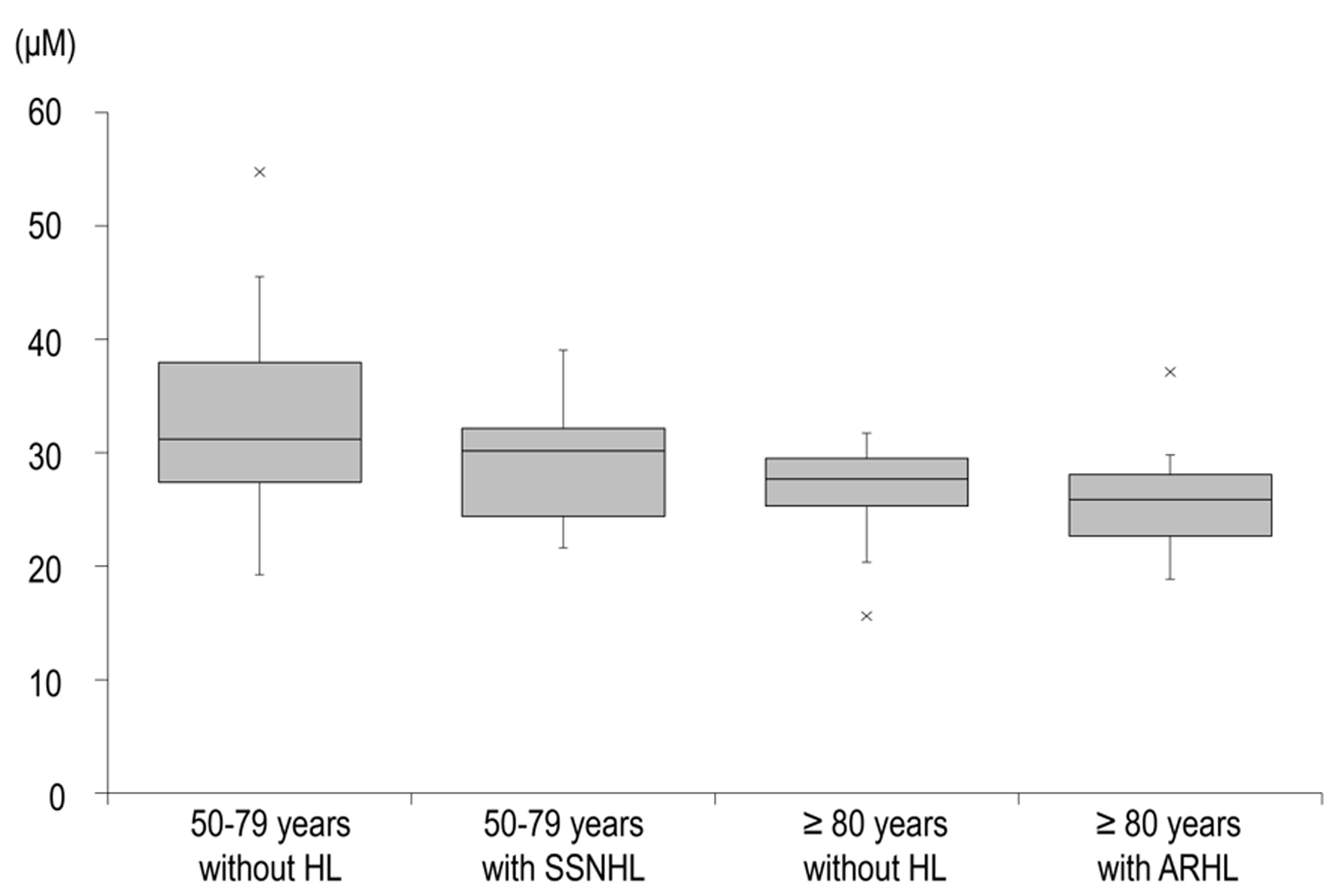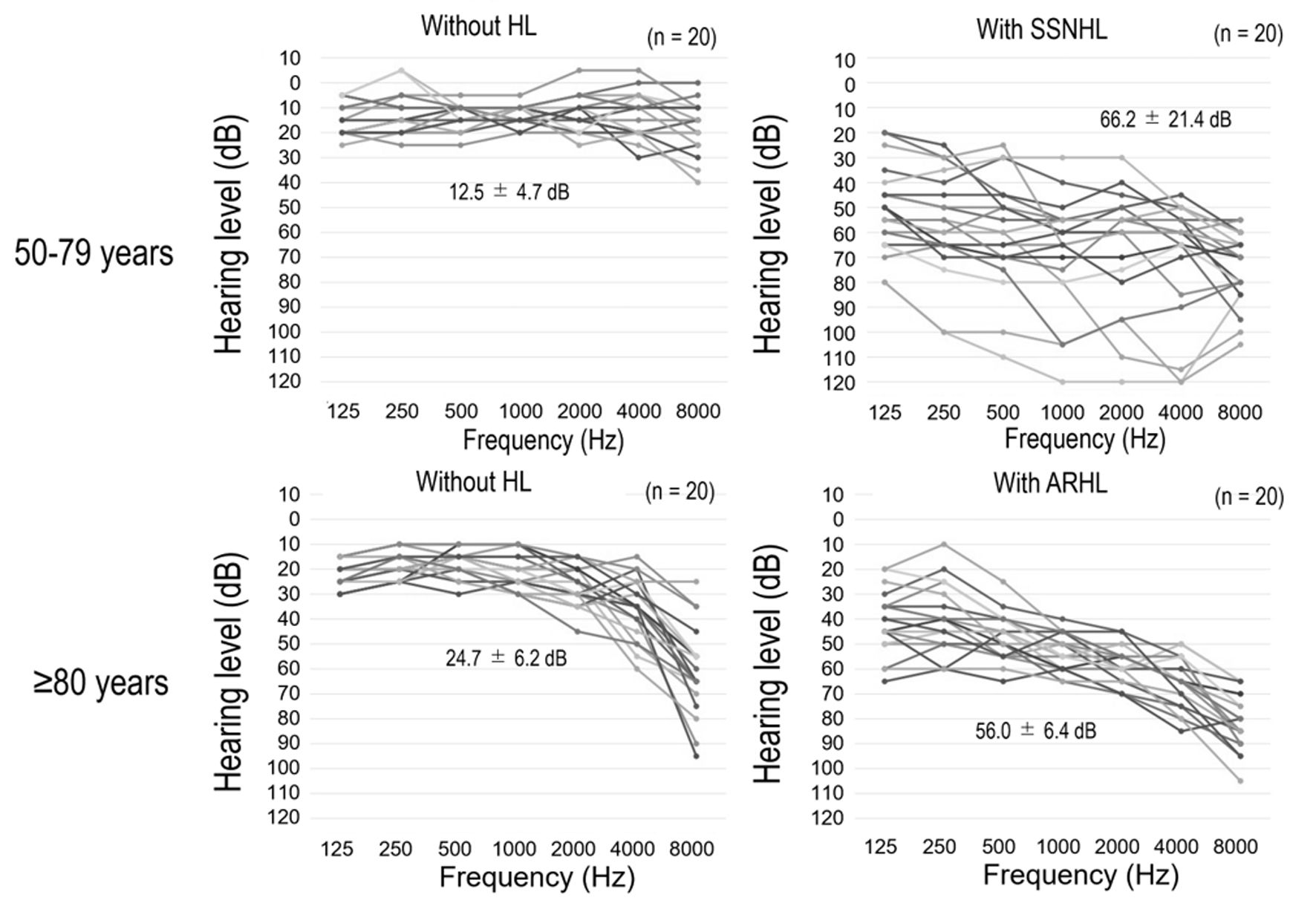
Figure 1. Distribution of NAD+ levels in each group. The boxes indicate the IQR, the black band in the middle of each box indicates the median, and the upper and lower whiskers indicate the upper and lower limits of the 1.5-fold range of the IQR, respectively. Data are median (interquartile range). ARHL: age-related hearing loss; HL: hearing loss; IQR: interquartile range; NAD+: nicotinamide adenine dinucleotide; SSNHL: sudden sensorineural hearing loss.
